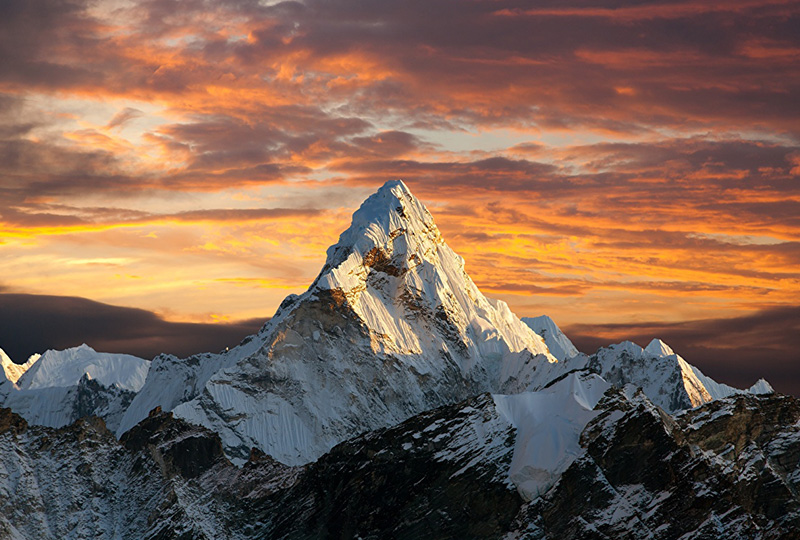Mount Everest: The Tallest Peak in the World

Mount Everest is part of the Himalayas, situated on the border between Nepal and Tibet (China). Standing at 8,848 meters (29,029 feet) above sea level, this mountain is known as the highest peak on Earth. Everest is particularly popular among adventurers and climbers, with many attempting to conquer its summit.
1. Geographic Features of Mount Everest
Mount Everest lies within a vast mountainous region spanning the Solukhumbu region of Nepal and the Tingri County of Tibet. This area is characterized by harsh climates and high altitudes, with glaciers, rocks, and snow surrounding Everest. Climbing Everest is extremely challenging due to high altitudes and harsh weather conditions.
2. History of Mount Everest
The first successful ascent of Mount Everest was achieved in 1953 by Tenzing Norgay from Nepal and Edmund Hillary from New Zealand. This feat was widely celebrated worldwide, and Everest's summit became a symbol of adventure and heroism. Since then, thousands of climbers have attempted Everest, with both successful and unsuccessful outcomes.
3. Climbing Mount Everest
Climbing Mount Everest is highly dangerous due to factors such as altitude and extreme weather conditions, requiring thorough preparation and training. Climbers typically spend several months ascending from base camp to the summit, establishing camps for altitude acclimatization along the way. Climbing Everest is physically and mentally demanding, requiring careful planning and preparation.
4. Environmental Impact of Mount Everest
Climbing Mount Everest also affects the surrounding environment. Accumulated waste and debris left by climbers can contribute to issues like glacier melting and landslides in mountainous regions. Sustainable climbing practices and environmental conservation efforts are deemed crucial.
5. Cultural Significance of Mount Everest
Mount Everest holds significant cultural importance in Nepal and Tibet. It is revered as a sacred mountain by local communities and serves as the focal point of festivals and ceremonies. Additionally, climbing activities stimulate the local economy and foster tourism development.
Conclusion
Mount Everest remains an enduring fascination for people worldwide due to its majestic presence and challenging conditions. Its historical significance, natural beauty, and cultural importance will be remembered for generations. However, summiting Everest is never easy and always involves risks and challenges.